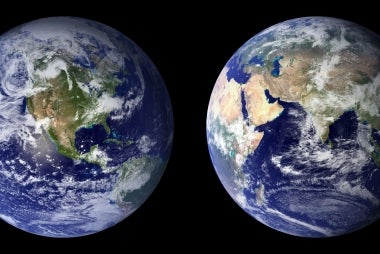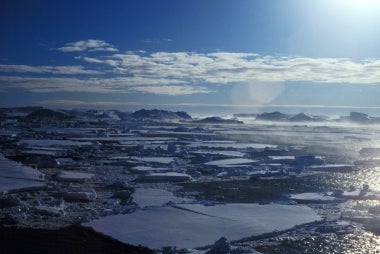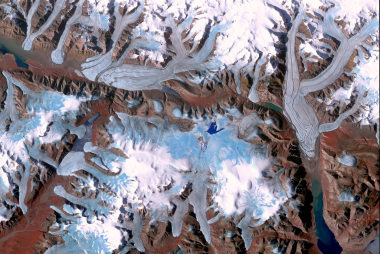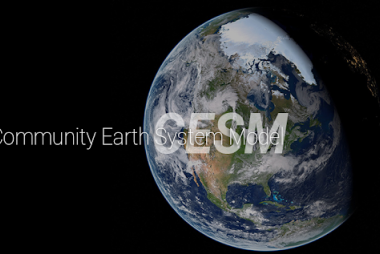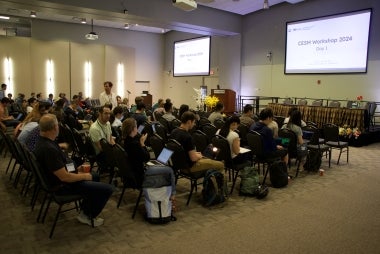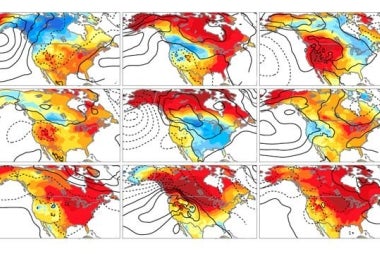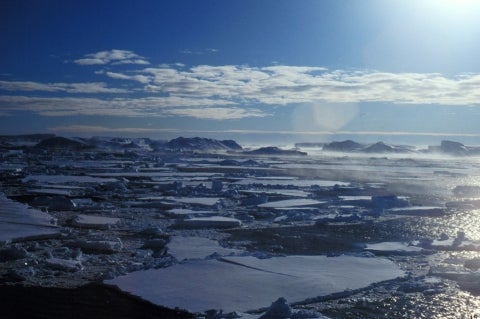Search
Search
Welcome to the Community Earth System Model (CESM) Newsletter. Want to receive our next newsletter in your inbox? Visit our newsletter page to subscribe and never miss a newsletter.
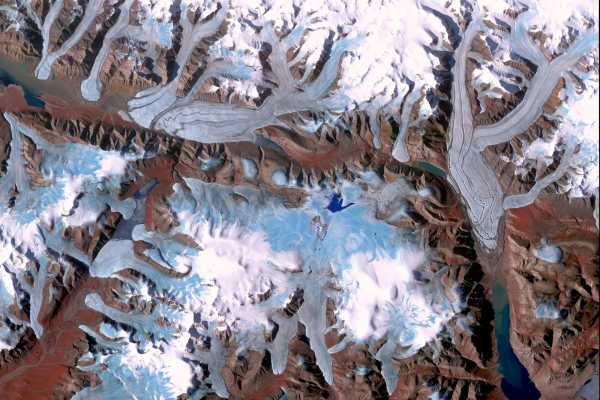
|
In this Newsletter:
Chief Scientist Message
EarthWorks
NSF StormSPEED Project
Updates from the MESACLIP and iPOGS Projects
visualCaseGen Tool
Searching for Photos from past CESM Workshops
Upcoming Meetings
Research Highlights from our Community
Quick Links
Chief Scientist Message
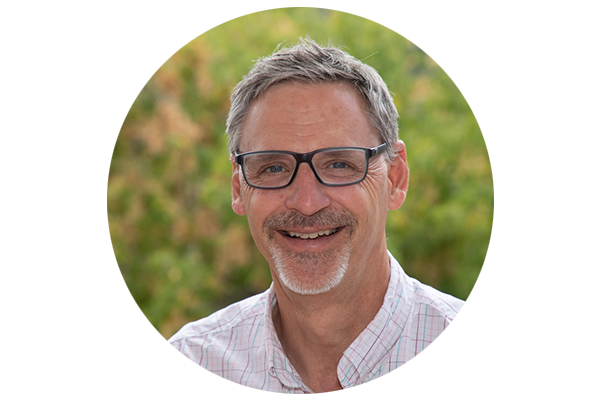
|
Dear colleagues,
Happy New Year and welcome to the January 2025 CESM Newsletter. In this Newsletter, we highlight several projects and activities that focus on modeling across scales. The EarthWorks and StormSPEED projects are building towards km-scale capabilities within the CESM framework. These and related activities will provide new research opportunities with CESM at the weather-climate interface. Additionally, the highly successful MesaCLIP project has produced an unprecedented set of high-resolution (0.25deg atm/lnd, 0.1deg ocn/ice) simulations that are leading to new understanding of the Earth System and how it may evolve going into the future. We also announce the release of the new visualCaseGen tool, a graphical user interface tool, that streamlines the creation and configuration of CESM cases. This is an important step forward in the CESM Project goals to enhance the ease-of-use of the CESM framework.
As reported in the last CESM Newsletter, the CESM Development team continues to push towards a final version of CESM3 for the CMIP7 FastTrack simulations and for release to the research community. For updates on progress and to get involved and help, I encourage people to attend the CESM Winter Working Group meetings (links for registration and to submit a presentation request are below). The status and final needs of CESM3 development will be a significant focal topic of discussion at these meetings. Finally, we announce the 30th Annual CESM Workshop and the CESM Tutorial that will take place this summer in June and July. Please mark your calendars. I look forward to seeing many of you at the AMS meeting next week. I am particularly looking forward to the Jerry Meehl symposium on Tuesday, which is a chance to honor one of CESM’s most distinguished scientists. There will also be a U.S. Climate Modeling Summit Town Hall on Monday lunchtime where there will be a discussion about the future of climate modeling and collaboration opportunities between the U.S. modeling centers.
EarthWorks
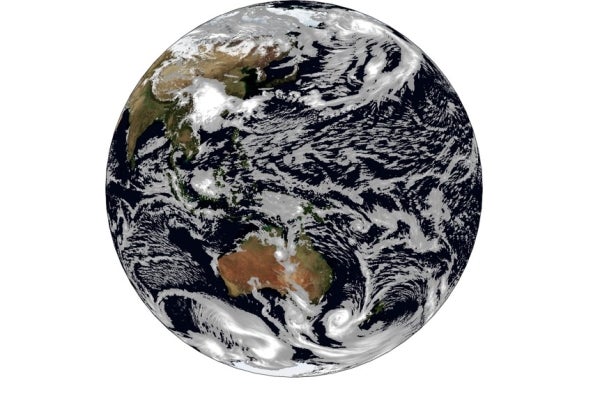
Caption
A snapshot of the condensed water simulated on a 7.5-km grid. The simulation was performed by Brian Dobbins of NSF NCAR. |
EarthWorks is a collaboration between Colorado State University (CSU) and NSF NCAR. EarthWorks has created a new, openly available configuration of CESM in which all components can be run at the same quasi-uniform resolution - up to a global storm resolving 3.75 km grid spacing. The dynamical cores of the atmosphere and ocean models are both based on the Model for Prediction Across Scales (MPAS), developed jointly by NSF NCAR and the Los Alamos National Laboratory (DoE). Performance is enhanced through the use of Graphics Processing Units (GPUs). The model is intended for both weather and climate applications. In 2024, the CESM Scientific Steering Committee agreed that EarthWorks will be officially supported as a ultra high-resolution configuration of CESM. Support for the ocean and sea ice models will be provided by CSU. All other model components will be supported by NSF NCAR. Recently, EarthWorks successfully ran the model with the target horizontal grid spacing of 3.75 km. The figure above shows a snapshot the vertically integrated condensed water from a simulation with a slightly coarser grid spacing of 7.5 km. The model configuration is available here.
Introducing the NSF StormSPEED Project
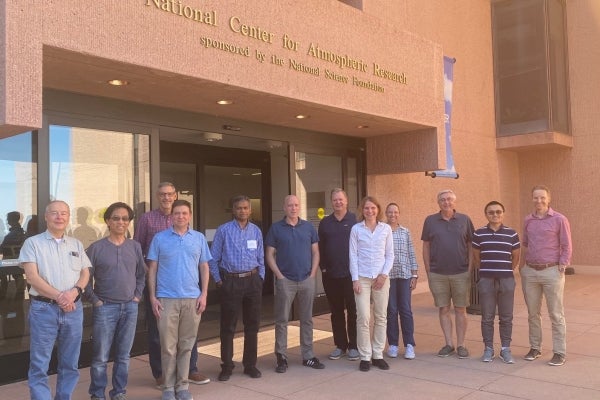
Caption
StormSPEED group photo taken at the Mesa Lab on 10/7/2024. |
NSF StormSPEED is a joint project between the University of Michigan (UM), Texas A&M University (TAMU), and NSF NCAR, with close collaboration with partners from DoE's Sandia National Laboratory and the CSU-led EarthWorks project. NSF StormSPEED provides additional capabilities for future-generation, cloud-permitting, community modeling projects with CESM. Over the project period (2024-2027) the collaborating team will (1) integrate existing nonhydrostatic (NH) version of the Spectral Element (SE) dynamical core from DoE’s E3SM model into CESM’s Community Atmosphere Model (CAM) to enable cloud-permitting coupled climate simulations, (2) advance CESM’s readiness for the newest high-performance computing architectures with Graphical Processing Units (GPUs), and (3) test and demonstrate CESM’s new scientific capabilities with the CAM-SE-NH configuration via a model hierarchy and selected scientific exemplars. The exemplars will focus on the interactions of extreme, convectively-driven precipitation over the Continental United States with the large-scale flow, and the impact of multi-scale ocean-atmosphere interactions on tropical precipitation and cyclones. This approach builds bridges between the mesoscale weather and large-scale climate communities and provides scientific insights into the impacts of mesoscale motions on the climate system. For more information, see the NSF StormSPEED website here.
Updates from the MesaCLIP and iPOGS Projects high-resolution CESM Projects
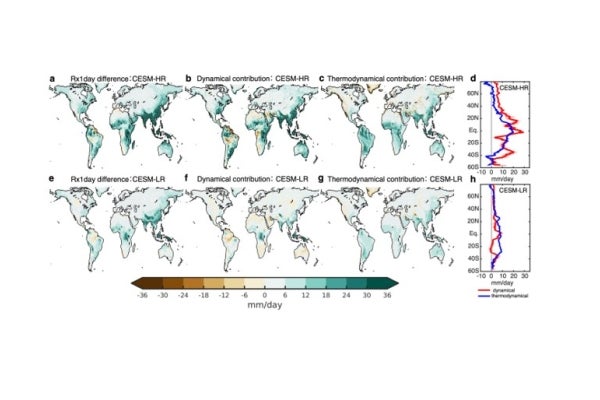
Caption
Figure. (from Chang et al. 2025) (a) Future changes in Rx1day (mm/day) over global land averaged over 2071-2100, relative to the 1981-2010 period, in CESM-HR. Future Rx1 day changes driven by dynamical (b) and thermodynamical (c) tendencies in CESM-HR. (d) Zonally averaged Rx1day changes driven dynamical (red) and thermodynamical (blue) tendencies across global land in CESM-HR. Shading represents standard deviation across ensemble members. (e-h) As in (a-d) but for CESM-LR. Stippling indicates regions where three-quarters of the ensemble members agree on the sign of the ensemble mean. |
A team of researchers consisting of scientists at the Texas A&M University (TAMU) and NSF NCAR has made major breakthroughs in advancing high-resolution global climate modeling and predictions. This effort is primarily funded by the NSF under a project entitled “understanding the role of MESoscale Atmosphere-ocean interactions in seasonal-to-decadal CLImate Prediction (MESACLIP)” We also acknowledge support from the Gulf Research Program of the U.S. National Academies of Sciences, Engineering, and Medicine through a project entitled “Improving Prediction and projection of Gulf of Mexico Sea-level changes using eddy-resolving Earth system models (iPOGS)”.
An unprecedented set of simulations have been performed at a tropical cyclone-permitting and ocean-eddy-rich resolution using an earlier version of the Community Earth System Model (CESM 1.3), with many additional modifications and improvements (hereafter simply referred to as CESM-HR). CESM-HR uses a 0.25° grid in the atmosphere and land and a 0.1° grid in the ocean and sea-ice components. Expanding upon CESM-HR simulations that started as an international collaboration in 2018 (Chang et al. 2020), the full set of simulations include: a 500-year pre-industrial control simulation; a 10-member ensemble of historical simulations; 10-member ensembles each of RCP8.5 and RCP6.0 future scenario simulations; 1 member each RCP4.5 and RCP2.6 future scenario simulations; all HighResMIP coupled and AMIP simulations; and 10-member ensembles of 5-year decadal prediction simulations for the 1980-2023 period with May and November start dates for each year. These high-resolution simulations offer promising potential to reduce model biases and uncertainties in comparison to their low-resolution counter parts (CESM-LR; nominal 1° resolution), improving our understanding of key processes. The MESACLIP and iPOGS team is excited to announce that the datasets from select simulations, including the 10-member ensembles of historical and future scenario simulations, are now available to the community through the NSF NCAR Research Data Archive (RDA) via the MESACLIP and iPOGS websites.
CESM-HR simulations significantly boost confidence in projections of future extreme precipitation changes. In a recent study, Chang et al. (2025) show striking improvements in CESM-HR over CESM-LR when comparing simulated and observed extreme precipitation using annual maximum daily precipitation (Rx1day) for the historical period. They then compare Rx1day projections for the late 21st century (2071-2100) under RCP8.5 relative to recent decades (1981-2010) (Fig. a and e). Both CESM-HR and CESM-LR project increased Rx1day across regions with intense extreme precipitation, but CESM-HR shows a much larger increase, with a global land-averaged Rx1day increase of 11.1 mm/day, ~90% greater than CESM-LR’s 5.9 mm/day increase. Regional differences are even more striking: CESM-HR projects increases exceeding 30 mm/day in parts of the classic monsoon region, five times the 6 mm/day increase projected by CESM-LR. Over the contiguous United States (CONUS), CESM-LR projects a 6 mm/day increase for both the West Coast and Southeast, while CESM-HR projects a similar increase for the West Coast but nearly triples it for the Southeast, reaching over 18 mm/day. CESM-HR’s sharper Rx1day increase from midlatitudes to subtropics and tropics aligns with its improved representation of mesoscale convective systems, which drive extreme precipitation but are underrepresented in CESM-LR.
A moisture budget analysis highlights key differences in drivers of future extreme precipitation. In CESM-HR, dynamical tendency dominates over thermodynamical tendency across most regions of intense extreme precipitation (Fig. b and c), suggesting that future intensifications arise from both moisture and circulation changes. In contrast, CESM-LR attributes Rx1day increases primarily to thermodynamical effects globally, except in the tropics where dynamical effects also contribute (Fig. f and g), implying that CESM-LR projects extreme precipitation increases mainly from enhanced atmospheric moisture in a warmer climate, consistent with findings from previous low-resolution models. These differences are further illustrated by zonally averaged dynamical and thermodynamical contributions (See Figure above, d and h).
Project Members: Ping Chang (TAMU), Gokhan Danabasoglu (NSF NCAR), Fred Castruccio (NSF NCAR), Dan Fu (TAMU), Teagan King (NSF NCAR), Xue Liu (TAMU), Greta Olson (TAMU), Nan Rosenbloom (NSF NCAR), Justin Small (NSF NCAR), Xiaoqi Wang (TAMU), Gaopeng Xu (TAMU), Steve Yeager (NSF NCAR), Qiuying Zhang (TAMU)
References
Chang, P., S. Zhang, G. Danabasoglu, S. G. Yeager, H. Fu, H. Wang, F. Castruccio, Y. Chen, J. Edwards, D. Fu, Y. Jia, L. C. Laurindo, X. Liu, N. Rosenbloom, R. J. Small, G. Xu, Y. Zeng, Q. Zhang, J. Bacmeister, D. A. Bailey, X. Duan, A. K. DuVivier, D. Li, Y. Li, R. Neale, A. Stössel, L. Wang, Y. Zhuang, A. Baker, S. Bates, J. Dennis, X. Diao, B. Gan, A. Gopal, D. Jia, Z. Jing, X. Ma, R. Saravanan, W. G. Strand, J. Tao, H. Yang, X. Wang, Z. Wei, and L. Wu, 2020: An unprecedented set of high-resolution Earth system simulations for understanding multiscale interactions in climate variability and change. J. Adv. Model. Earth Sys., 12, e2020MS002298, doi: 10.1029/2020MS002298.
Chang, P., D. Fu, X. Liu, F. Castruccio, A. F. Prein, G. Danabasoglu, X. Wang, J. Bacmeister, Q. Zhang, N. Rosenbloom, and S. Bates, 2025: Amplified future extreme precipitation risks projected by high-resolution climate models. Nat. Clim. Change (submitted).
visualCaseGen Tool
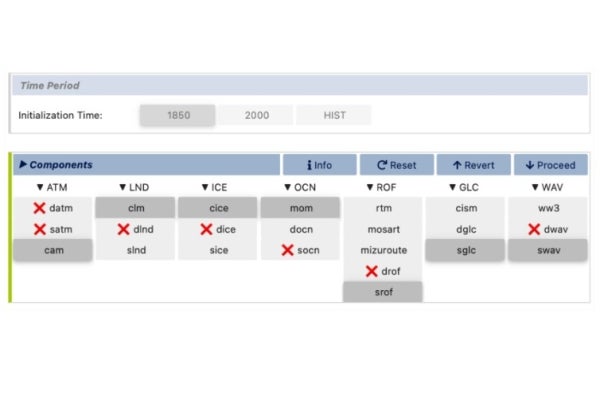
|
We are pleased to announce the release of the visualCaseGen tool. This is a Jupyter-based graphical user interface (GUI) that can be used to streamline the creation and configuration of CESM cases (tag cesm3_0_beta08 and later). It can be used to browse standard CESM configurations and easily select from available CESM compsets and resolutions and it also greatly simplifies the setup of user-defined custom configurations. For example, this tool can guide you through the setup of a world with your own idealized ocean bathymetry, continental geometry, and land surface properties. Check out this video tutorial that demonstrates how visualCaseGen can be used. We also encourage users to explore this new tool following the documentation here and to open issues on the visualCaseGen GitHub repository if problems arise. The development of this tool has been made possible by NSF OAC Elements award number 2004575 and was led by Alper Altuntas with contributions from Sam Levis, Brian Dobbins, Isla Simpson, Scott Bachman, Gokhan Danabasoglu, Bill Sacks, Erik Kluzek, and Mariana Vertenstein.
Searching for photos from past CESM Workshops

Caption
Bill Large receiving the CESM Distinguished Achievement Award from past CESM chief scientist Gokhan Danabasoglu in 2018. |
The CGD Admin team is searching for photos from past CESM Workshops for potential display at the forthcoming 30th Annual CESM Workshop (see below). If you have any photos, please submit them to this Google form. Any submission is greatly appreciated.
Upcoming Meetings
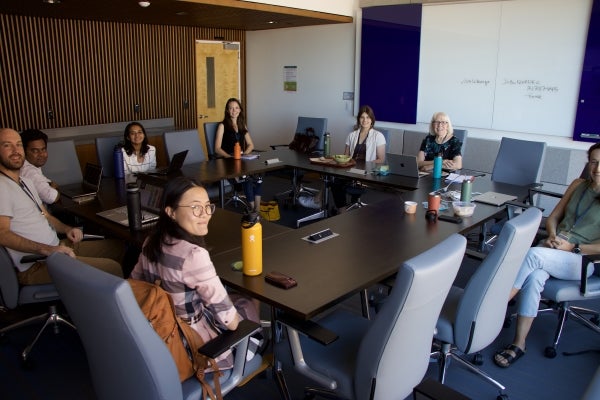
|
2025 CESM Winter Working Group Meetings
The 2025 CESM Winter Working Group Meetings will take place from January 28th to March 7th, 2025. The schedule can be found below:
Land Ice Working Group Meeting: Tuesday, January 28th
Paleoclimate Working Group Meeting: Wednesday, January 29th
Software Engineering Working Group Meeting: Thursday, January 30th
Atmosphere Model, Chemistry Climate, Whole Atmosphere, Earth System Prediction and Climate Variability and Change Working Group Meeting: February 3rd to 6th
Land Model and Biogeochemistry Working Group Meeting: February 24th to 26th
Ocean Model Working Group: February 27th to 28th
Polar Climate Working Group: March 3rd to 6th
More information can be found on the logistics tab of our webpage.
Save the Date: The 30th Annual CESM Workshop

|
Join us, in person or online, for the 30th Annual CESM Workshop. June 9-11, 2025, Boulder CO. Details and links for lodging can be found online. The call for talks and workshop registration will open soon.
The CESM Tutorial
The CESM Tutorial will take place from July 7 to July 11, 2025, in Boulder, CO. More information and the application can be found here.
The tutorial will consist of lectures on simulating the climate system, practical sessions on running CESM, modifying components, and analyzing data, small group discussions with CESM scientists, and student networking.
The CESM tutorial is targeted to individuals with no or little experience with CESM. It provides attendees with a solid scientific understanding of the CESM components and the basic building blocks to start running the model. We welcome applications from students, postdocs, research scientists, and faculty members, especially from individuals whose research/career would benefit from using CESM.
The deadline to apply is Monday, February 3, 2025, at 11:59 PM Mountain Time. Decisions will be made by April 18, 2025.
Research Highlights from Our Community
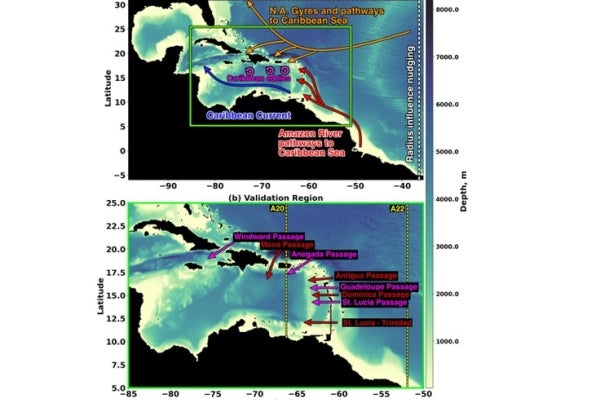
Caption
Figure 1: Model domain and topography from CARIB12 |
CARIB12: A Regional Community Earth System Model / Modular Ocean Model 6 Configuration of the Caribbean Sea
Giovanni G. Seijo-Ellisa, Donata Giglio, Gustavo M. Marques, and Frank O. Bryan
A new CESM/MOM6 ocean-only regional 1/12° configuration of the Caribbean Sea is presented and validated. The model configuration was developed as a response to the rising need of high-resolution models for climate impact applications. The configuration is validated for the period covering 2000–2020 against ocean reanalysis and a suite of observation-based datasets. Particular emphasis is paid to the configuration's ability to represent the dynamical regime and properties of the region across sub-seasonal, seasonal and inter-annual timescales. Near-surface fields of temperature, salinity and sea-surface height are well represented. In particular the seasonal cycle of sea-surface salinity and the spatial pattern of the low salinity associated with the Amazon and Orinoco river plumes is well captured. Surface speeds compare favorably against reanalysis and show the mean flows within the Caribbean Sea are well represented. We performed a case study to examine the origin of waters arriving to the Virgin Islands Basin and show the model reproduces known pathways and timing for river plume waters intruding the region. The seasonal cycle of the mixed layer depth is also well represented with biases of less than 3 m when comparing to ocean reanalysis. The vertical structure and stratification across the water column is represented favorably against ship-based observations with the largest simulated biases in the near-surface water mass and the sub-surface salinity maximum associated with the sub-tropical underwater mass. The temperature and salinity variability of the vertical structure is well represented in the model solution. We show that mean ocean mass transports across the multiple passages in the eastern Caribbean Sea compare favorably to observation-based estimates, but the model exhibits smaller variability compared to ocean reanalysis transport estimates. Furthermore, a brief comparison against a 1° CESM global ocean configuration shows that the higher resolution regional model improves significant biases in sea-surface salinity and mixed layer depth in particular. Additionally, the regional model better represents important features and variability within the Caribbean Sea compared to the 1° model. Overall, the regional model reproduces to a good degree the processes within the Caribbean Sea and opens the possibility of regional ocean climate studies in support of decision-making within CESM.
Predictability of Tropical Pacific Decadal Variability is Dominated by Oceanic Rossby Waves
Xian Wu, Stephen G. Yeager, Clara Deser, Antonietta Capotondi, Andrew T. Wittenberg & Michael J. McPhaden
Despite its pronounced global impacts, tropical Pacific decadal variability (TPDV) is poorly predicted by current climate models due to model deficiencies and a limited understanding of its underlying mechanisms. Using observational data and a hierarchy of model simulations including decadal hindcasts, we find that decadal isopycnal depth variability driven by oceanic Rossby waves in the tropical Pacific provides the most important source of predictability for TPDV. The predictability arising from initial isopycnal depth conditions is further amplified by tropical ocean-atmosphere coupling and variations in the strength of subtropical cells in the Pacific throughout the decadal forecasts. Regional initialization experiments that effectively isolate the impact of different ocean basins on TPDV predictability highlight the essential role of the tropical Pacific. This study enhances our understanding of the mechanisms governing TPDV predictability, offering crucial insights for improving the accuracy of decadal predictions.
When is a trend meaningful? Insights to carbon cycle variability from an initial-condition large ensemble
Bonan, G. B., Deser, C., Wieder, W. R., Lombardozzi, D. L., and Lehner, F.
Evidence for a changing biosphere is obtained from the worldwide network of eddy covariance flux towers, which measure energy, water, and CO 2 exchange between the biosphere and atmosphere. Analyses of flux tower measurements find temporal increases in terrestrial productivity at many locations, but the extent to which internal climate variability influences carbon cycle trends is unknown. We used the CESM2 initial-condition large ensemble to show that internal variability produces a range of outcomes in the terrestrial carbon cycle. Trends in gross primary production (GPP) from 1991–2020 differ among ensemble members due to the different climate trajectories resulting from internal variability. We quantified how internal climate variability imparts on GPP trends and applied our methodology to the observational record. Observed changes in GPP at two long-running eddy covariance flux towers are consistent with internal variability, challenging the understanding of forced changes in the carbon cycle at these locations. A probabilistic framework that accounts for internal variability is needed to interpret carbon cycle trends.
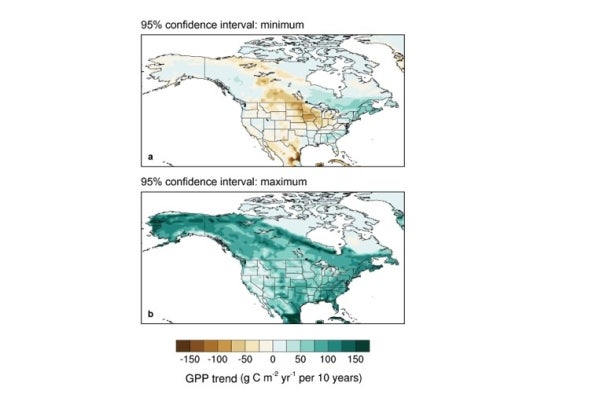
Caption
95% confidence interval in annual GPP trends for 1991–2020. Shown are the (a) low and (b) high values for the 95% confidence interval obtained from the large ensemble. GPP trends range from negative to positive in some regions, most prominently in the Canadian prairie extending into Midwest US. In other regions, the 95% confidence interval spans a range from small to large positive trends. |
Quick Links
CGD X Account
CGD Youtube Channel
CGD Instagram
CGD LinkedIn
CESM User Support Forum
CVCWG Simulations
Simpler Models Information
Thanks for reading this CESM Newsletter! Expect to see the next one in the Spring of 2025. Please send potential Newsletter items to Elizabeth Faircloth.
Subscribe to our newsletter
Recent News
Search
Welcome to the Community Earth System Model (CESM) Newsletter. Want to receive our next newsletter in your inbox? Visit our newsletter page to subscribe and never miss a newsletter.
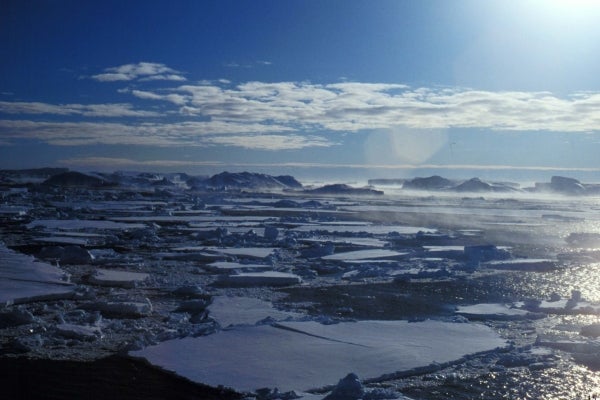
Credit
Photo by Elizabeth Hunke
|
In this Newsletter:
Chief Scientist Message
30th Annual CESM Workshop
Plenary Speakers for the 30th Annual CESM Workshop
Faculty Network
Searching for Photos from past CESM Workshops
CESM Winter Working Group Video Recordings Available
Research Highlights from Our Community
Quick Links
Chief Scientist Message

|
I want to begin by acknowledging the ongoing anxiety and sadness that so many of us are feeling as we hear and read about layoffs, restrictions, and reduced science budgets at NSF and other federal agencies. With all of this uncertainty, it can be challenging to maintain focus on research. But, I have been impressed and thankful for the continued dedication and effort of the CESM development team and for the broader CESM research community that continues to utilize CESM and CESM model output to conduct impactful research.
Within the broader context of this uncertainty, we are pushing forward with CESM activities. The 30th Annual CESM Workshop is coming up on June 9-11. To commemorate the 30th Workshop, we have several special events lined up, including a panel session with all the prior CESM Chief Scientists, where we will be discussing the future of Earth System modeling and science. More details about the workshop, along with links for registration and presentation requests, are below. As always, we are looking forward to the opportunity to engage with the CESM community, to meet new students and postdocs, and to foster new collaborations and directions for CESM. Note that limited travel and registration support is available to early career participants who wish to give a presentation. The deadline for presentation requests is April 30, and the deadline for in-person registration is May 29!
The CESM Workshop arrives during a period when the CESM development team is working hard to produce a final CESM3 version. We are steadfastly working through a series of issues and biases with the beta version, and are testing the updated forcing datasets from CMIP, as well as improving our workflows to ease the use of CESM for everyone. The CESM Workshop will be an opportunity for us to share the status and progress towards CESM3.
Also included below is some information about our new effort to form a Faculty Network for Teaching with CESM. We’ve spent time over the past year collecting information from faculty about how we can better support them and help them support each other in the use of CESM in their curricula. We are excited to see how this effort progresses. The CESM Tutorial is also coming up in early July, and many NSF NCAR staff are working to update and improve tutorial materials, which will hopefully also be useful for faculty.
Thanks for reading, and I hope to see many of you at the 30th Annual CESM Workshop.
30th Annual CESM Workshop
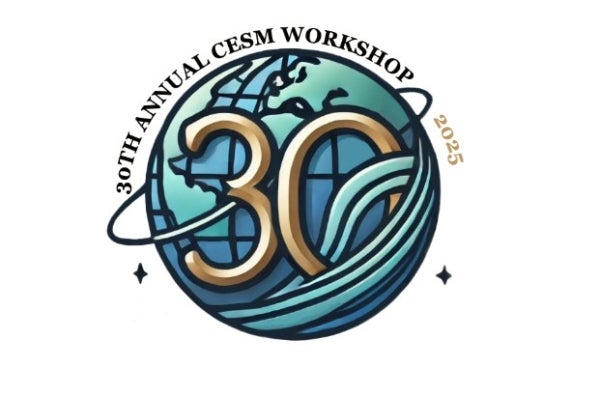
|
The CESM Workshop will begin on Monday, 9 June 2025. The day will include presentations on the state of the CESM, presentations by this year's award recipients, and plenary presentations followed by CESM Working Group Meetings in the afternoon and an interactive poster session.
On 10-11 June 2025, there will be Working Group and Cross-Working Group sessions designed to share information and encourage discussion and collaboration.
Tuesday afternoon will include a CESM 30th Annual Workshop Celebration with CESM history talks and a round-table discussion about the future of Earth System modeling and science with previous CESM Chief Scientists (Jeff Kiehl, Bill Collins, Jim Hurrell, Peter Gent, Marika Holland, Jean-Francois Lamarque, and Gokhan Danabasoglu), followed by a reception, dinner, and music.
The two Cross-Working Group sessions this year will be:
I. Harnessing Machine Learning for CESM: Innovation and Integration that focuses on ML applications in both model development and CESM simulation analysis.
II. High Resolution: This session will focus on the successes, opportunities, and challenges with the development and application of CESM (coupled or component models) at high resolutions, inclusive of 10-25km resolutions down to km-scale resolutions and including regionally-refined or regional modeling capabilities.
In addition to traditional activities of the Polar Climate (PCWG) and Biogeochemistry (BGCWG) working groups, these working groups are also organziing their sessions around work related to biogeochemical and ecological work in polar regions.
🚨 Call for Abstracts 🚨
- Please use this Google Form to submit a request for a presentation at the 2025 CESM Workshop.
- Submit your request by April 30, 2025!
- You will be notified if your talk or poster is accepted the week of May 5, 2025.
- In-person registration closes May 29, 2025.
- Registration to participate online will remain open through the duration of the workshop.
Meeting details and lodging options are available on the website.
30th Annual CESM Workshop Celebration
As noted above, we look forward to celebrating the 30th Annual CESM Workshop on Tuesday, June 10th with talks and a round table with former Chief Scientists, followed by a networking reception with workshop participants. For those wishing to attend just this afternoon/evening celebration event, there will be no registration fee to attend in person. Please fill out this form if you'd like to join for just this celebratory event.
Plenary Speakers for the 30th Annual CESM Workshop
Mind the Gap: Human Systems are a Missing, Critical Component for Earth Systems Modeling
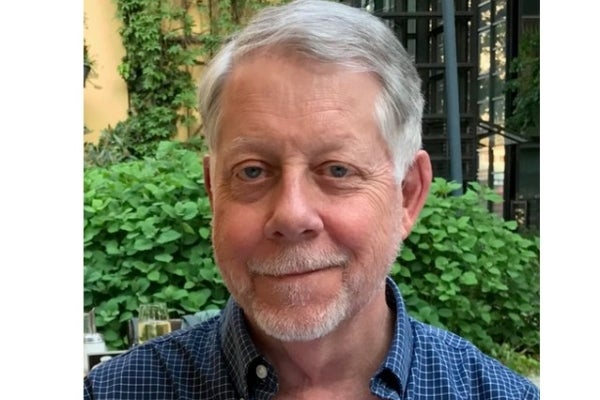
|
Michael Barton is a complex system scientist and Professor in the Schools of Complex Adaptive Systems and Human Evolution & Social Change at Arizona State University (USA). He is Executive Director of the Open Modeling Foundation, a global consortium of organizations to promote standards and best practices in computational modeling across the social and natural sciences. He also directs the Network for Computational Modeling in Social and Ecological Sciences, an international scientific network to enable accessibility, open science, and best practices for computation in the socio-ecological sciences. Barton's research centers around long-term human ecology, landscape dynamics, and the multi-dimensional interactions between social and biophysical systems, integrating computational modeling, geospatial technologies, and data science with geoarchaeological field studies. Barton has directed transdisciplinary research on hunter-gatherers and small-holder farmers in the Mediterranean and North America for over three decades, and directs research on human-environmental interactions in the modern world. Web page and CV at: https://cmbarton.github.io/.
From Earth System Science to Societal Impact: One Scientist's Journey

|
Dr. Hansi Singh is co-founder and CEO of Planette AI, a venture-backed, mission-driven environmental forecasting startup based in San Francisco, CA. She has a PhD in atmospheric sciences and an MS in applied mathematics from the University of Washington, and was a recipient of the US Department of Energy's Computational Sciences Graduate Fellowship and Linus Pauling Distinguished Postdoctoral Fellowship. Before Planette, she held a faculty position at the University of Victoria School and Earth and Ocean Sciences, with research focused on coupled climate dynamics and polar sensitivity.
Bridging the Gap: Communicating Earth System Science to Stakeholders, Communities, and Decision Makers
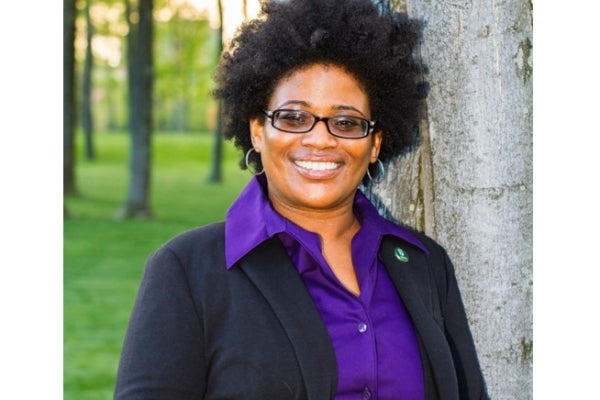
|
Dr. Paula R. Buchanan is a practitioner-academic (“pracademic”), sociohydrologist, and disaster and emergency management researcher. She researches sustainable drinking water access issues, focusing on the intersections between public health, risk and science communication, sociology, and emergency management. As a socio-hydrologist, her research focuses on how people interact with drinking water systems, and human behavior’s impact on these systems that support drinking water to sustain life. A central question of Dr. Buchanan’s research is the extent to which socio-technical systems function as a communication channel to provide populations with accurate information to mitigate impacts associated with, or exacerbated by, water-based disasters. She is interested in using mixed methods to better understand the multi-faceted nature of her interdisciplinary research interests. As a self-proclaimed data nerd, Dr.Buchanan is also passionate about using data science, information technology, and data
Visualizations as tools to more effectively communicate with targeted audiences.
Faculty Network for Teaching with CESM
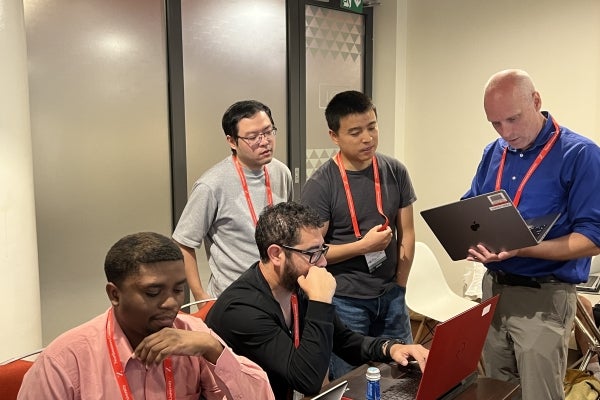
|
Over the past year, we have been collecting information through a survey and through virtual discussion forums about how we can facilitate the sharing of information and resources to help faculty best utilize CESM and its components or simpler models in their undergraduate or graduate curricula. Thanks to all the faculty members who either responded to the survey or participated in our virtual forums. Nearly 70 faculty members filled in the survey, indicating that they are either already using CESM in their classrooms or that they would like to. We learned about many common issues, including concerns about computational resources, challenges with porting CESM, the complexity of CESM, and the lack of time to develop curricula. What is clear is that a big step forward is a centralized location where faculty can go to get all the information that they would need to get started. This includes information about computing allocations and options, tutorial material, configuration options and costs, and a forum and communication pathways for faculty to interact with each other and with CESM staff.
So, in response to these needs, we have created a Faculty Network for Teaching with CESM website with this information. The website is still in development and will continue to be updated over the next several weeks. Please send feedback with requests for additional information to Elizabeth Faircloth. Here are also the slides that we shared at the virtual forums.
Searching for photos from past CESM Workshops
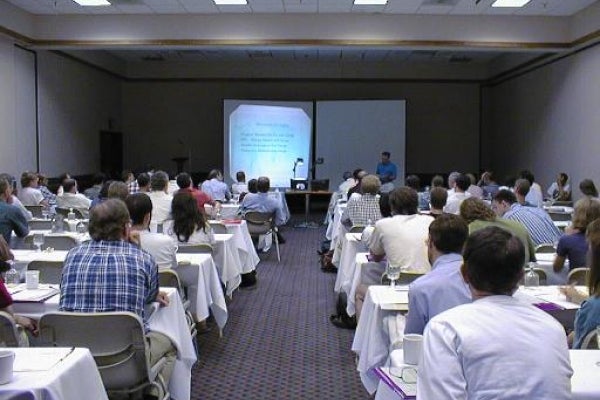
Caption
A picture from the 1997 CSM Workshop |
The CGD Admin team is searching for photos from past CESM Workshops for potential display at the forthcoming 30th Annual CESM Workshop (see below). If you have any photos, please submit them to this Google form. Any submission is greatly appreciated.
CESM Winter Working Group Video Recordings Available
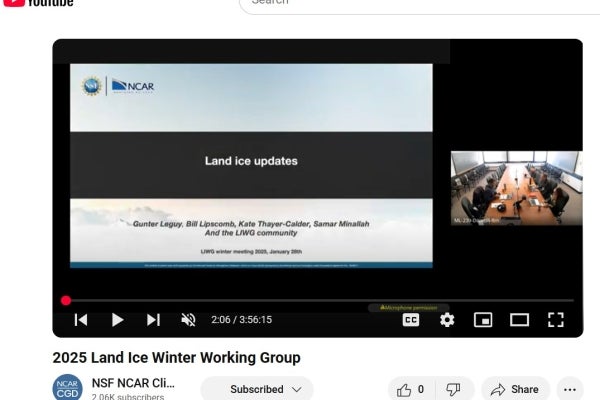
|
The recordings of the CESM Winter Working Group Meetings, which took place at the Mesa Lab from Jan. 27 to Mar. 5, 2025, are now available. The agenda for each working group meeting contains the recordings. The YouTube playlist can also be found here.
Research Highlights from Our Community
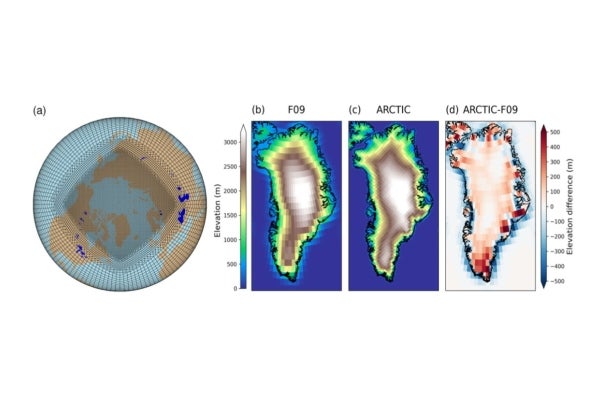
Caption
Impact of grids and dynamical cores in CESM2.2 on the surface mass balance of the Greenland Ice Sheet. |
Agricultural fertilization significantly enhances amplitude of land-atmosphere CO2 exchange
Danica L. Lombardozzi, William R. Wieder, Gretchen Keppel-Aleks, Jiameng Lai, Zhenqi Luo, Ying Sun, Isla R. Simpson, David M. Lawrence, Gordon B. Bonan, Xin Lin, Charles D. Koven, Pierre Friedlingstein & Keith Lindsay
Observations show an increase in the seasonal cycle amplitude of CO2 in northern latitudes over the past half century. Although multiple drivers contribute, observations and inversion models cannot quantitatively account for the factors contributing to the increased CO2 amplitude and older versions of Earth System Models (ESMs) do not simulate it. Here we show that several current generation ESMs are closer to the observed CO2 amplitude and highlight that in the Community Earth System Model (CESM) agricultural nitrogen (N) fertilization increases CO2 amplitude by 1-3 ppm throughout the Northern Hemisphere and up to 9 ppm in agricultural hotspots. While agricultural N fertilization is the largest contributor to the enhanced amplitude (45%) in Northern Hemisphere land-atmosphere carbon fluxes in CESM, higher CO2 concentrations and warmer temperatures also contribute, though to a lesser extent (40% and 18% respectively). Our results emphasize the fundamental role of agricultural management in Northern Hemisphere carbon cycle feedbacks and illustrate that agricultural N fertilization should be considered in future carbon cycle simulations.
The Role of Leaf Area Changes Within Plant CO2 Physiological Impacts on the Global Hydrological Cycle
Alana S. Cordak, Gabriel J. Kooperman, Claire M. Zarakas, Abigail L. S. Swann, Charles D. Koven
Rising atmospheric CO2 concentrations enhance greenhouse warming and drive changes to plant physiology, leading to innumerable climate impacts. This study explores the impacts of plant responses on hydrological cycling at 2x preindustrial CO2 concentrations by analyzing simulations that isolate plant physiological effects using the Community Earth System Model versions 1 and 2. We find that leaf area growth increases canopy evaporation, which offsets transpiration declines, and dampens changes in global mean evapotranspiration, precipitation, and runoff in a CESM2 experiment with dynamic leaf area. These leaf area impacts are also evident in the differences between CESM1 and CESM2, with CESM2 better capturing observed leaf area magnitudes but potentially overestimating leaf area-CO2 sensitivity, highlighting the importance of plant CO2 physiology on hydrological cycle changes and the need to improve its representation in climate models.
Improved Understanding of Multicentury Greenland Ice Sheet Response to Strong Warming in the Coupled CESM2-CISM2 With Regional Grid Refinement
Ziqi Yin, Adam R. Herrington, Rajashree Tri Datta, Aneesh C. Subramanian, Jan T. M. Lenaerts, Andrew Gettelman
The simulation of ice sheet-climate interactions, such as surface mass balance fluxes, is sensitive to model grid resolution. Here we simulate the multi-century evolution of the Greenland Ice Sheet (GrIS) and its interaction with the climate using the Community Earth System Model version 2.2 (CESM2.2) including an interactive GrIS component (the Community Ice Sheet Model v2.1 [CISM2.1]) under an idealized warming scenario (atmospheric CO2 increases by 1% yr −1 until quadrupling the pre-industrial level and then is held fixed). A variable-resolution (VR) grid with 1/4°regional refinement over the broader Arctic and 1°resolution elsewhere is applied to the atmosphere and land components, and the results are compared with conventional 1° lat-lon grid simulations to investigate the impact of grid refinement. Compared with the 1° runs, the VR run features a slower rate of surface melt, especially over the western and northern GrIS, where the ice surface slopes gently toward the periphery. This difference pattern originates primarily from higher snow albedo and, thus, weaker albedo feedback in the VR run. The VR grid better captures the CISM ice sheet topography by reducing elevation discrepancies between CAM and CISM and is, therefore, less reliant on the downscaling algorithm, which is known to underestimate albedo gradients. The sea level rise contribution from the GrIS in the VR run is 53 mm by year 150 and 831 mm by year 350, approximately 40% and 20% less than that of the 1° runs, respectively.
Quick Links
CGD YouTube Channel
CGD Instagram
CGD LinkedIn
CGD Bluesky
CESM User Support Forum
CVCWG Simulations
Simpler Models Information
Thanks for reading this CESM Newsletter! Expect to see the next one in the Summer of 2025. Please send potential Newsletter items to Elizabeth Faircloth.
